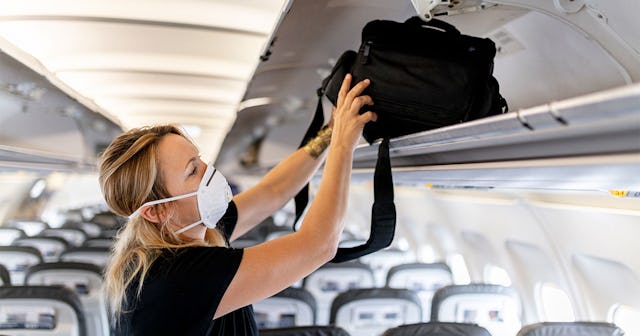CDC Says Empty Middle Plane Seats Reduce COVID Exposure By 57%

A new report by the CDC shows exactly how crucial keeping that middle plane seat empty can be when it comes to reducing passengers’ exposure to COVID-19
It’s not an understatement to point out that the COVID-19 pandemic has called into question many of the everyday mundane things so many people hadn’t previously given much thought to — including how close we are to others in shared spaces, like an airplane cabin.
As more and more people are becoming vaccinated against COVID-19 and the prospect of traveling for work or leisure becomes a more widespread possibility in the coming months, a new report by the Centers for Disease Control and Prevention (CDC) points out that one safety measure adopted by many commercial airlines at the start of the pandemic — leaving middle plane seats empty to help keep passengers more safely distanced from one another — is actually extremely effective in helping to reduce the risk of contracting the virus. As in, up to 57% effective.
In 2017, researchers from the CDC and Kansas State University looked at model data of scenarios for exposure rates to viruses like COVID-19 on both single-aisle and twin-aisle airplanes in which the planes’ middle seats were left vacant, and they found that the risk of being exposed to the virus may be reduced by 23% to 57% when compared to a full occupancy flight.
The models were based on the spread of bacterial aerosols to estimate how a virus like COVID-19 would spread under the same conditions, finding that when the middle seats were left vacant, the risk was reduced by 23% for a single passenger who was seated two seats away in the same row from an infectious passenger to 57% when middle seats were unoccupied across a section of three rows filled with both infectious and non-infectious passengers.
“When the infectious and other passengers who would have had middle seats were removed, leaving six infectious passengers out of 12 total passengers remaining in the window and aisle seats, a 57% exposure reduction was observed,” the researchers concluded.
Though it’s worth pointing out this data only addresses exposure risk and not actual transmission (and does not address other safety measures like vaccinations and mask-wearing, since the data was compiled in 2017), it does seem to validate that distancing — even in close quarters, such as an airplane cabin — is effective in helping reduce overall risk.
That said, the study comes on the heels of most airlines rolling back the empty middle seat guidance. Bloomberg reports that beginning on May 1, Delta — the last commercial U.S. air carrier keeping middle seats vacant — will roll back the measure, a move no doubt fueled by a desire to help recoup as much of the reported $35 billion lost by U.S. airlines in 2020 alone.
It seems the promise of a little extra elbow room — and fewer fears about catching COVID-19 from your seat neighbor — are already becoming a thing of the past before the average person even got to even experience it.